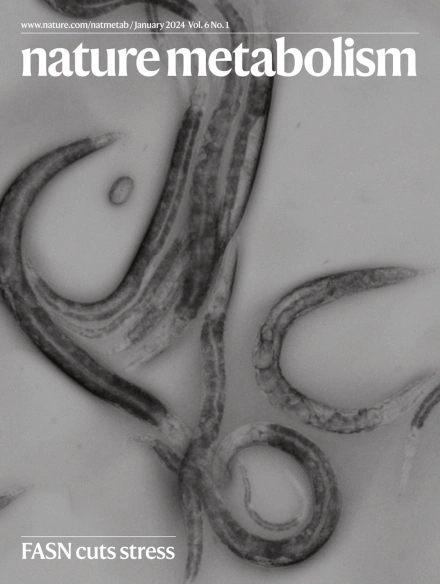促炎巨噬细胞通过复合物I的反向电子传递产生线粒体来源的超氧化物,在NLRP3炎症小体激活过程中调节IL-1β的释放
IF 18.9
1区 医学
Q1 ENDOCRINOLOGY & METABOLISM
引用次数: 0
摘要
巨噬细胞受脂多糖(LPS)刺激产生线粒体来源的活性氧(mtROS),作为抗菌剂和氧化还原信号;然而,脂多糖诱导线粒体产生超氧化物的机制尚不清楚。本研究表明,lps刺激的骨髓源性巨噬细胞在电子传递链的复合体I处通过反向电子传递(RET)产生超氧化物。利用化学生物学和遗传学方法,我们证明了超氧化物的产生是由lps诱导的代谢重编程驱动的,它增加了质子动力(∆p),主要是通过提高线粒体膜电位(Δψm)和维持减少的CoQ库。关键的代谢变化是ATP生产从氧化磷酸化到糖酵解,这减少了对F1FO-ATP合成酶活性的依赖,导致更高的∆p,而琥珀酸的氧化维持了一个减少的CoQ池。此外,RET产生的mtROS调节NLRP3炎性体激活过程中IL-1β的释放。因此,我们证明了RET产生的ROS是一个重要的线粒体来源信号,调节巨噬细胞细胞因子的产生。本文章由计算机程序翻译,如有差异,请以英文原文为准。


Pro-inflammatory macrophages produce mitochondria-derived superoxide by reverse electron transport at complex I that regulates IL-1β release during NLRP3 inflammasome activation
Macrophages stimulated by lipopolysaccharide (LPS) generate mitochondria-derived reactive oxygen species (mtROS) that act as antimicrobial agents and redox signals; however, the mechanism of LPS-induced mitochondrial superoxide generation is unknown. Here we show that LPS-stimulated bone-marrow-derived macrophages produce superoxide by reverse electron transport (RET) at complex I of the electron transport chain. Using chemical biology and genetic approaches, we demonstrate that superoxide production is driven by LPS-induced metabolic reprogramming, which increases the proton motive force (∆p), primarily as elevated mitochondrial membrane potential (Δψm) and maintains a reduced CoQ pool. The key metabolic changes are repurposing of ATP production from oxidative phosphorylation to glycolysis, which reduces reliance on F1FO-ATP synthase activity resulting in a higher ∆p, while oxidation of succinate sustains a reduced CoQ pool. Furthermore, the production of mtROS by RET regulates IL-1β release during NLRP3 inflammasome activation. Thus, we demonstrate that ROS generated by RET is an important mitochondria-derived signal that regulates macrophage cytokine production. Casey et al. explore the basic mechanisms of mitochondrial superoxide production and its impact on interleukin-1β production in LPS-treated macrophages.
求助全文
通过发布文献求助,成功后即可免费获取论文全文。
去求助
来源期刊

Nature metabolism
ENDOCRINOLOGY & METABOLISM-
CiteScore
27.50
自引率
2.40%
发文量
170
期刊介绍:
Nature Metabolism is a peer-reviewed scientific journal that covers a broad range of topics in metabolism research. It aims to advance the understanding of metabolic and homeostatic processes at a cellular and physiological level. The journal publishes research from various fields, including fundamental cell biology, basic biomedical and translational research, and integrative physiology. It focuses on how cellular metabolism affects cellular function, the physiology and homeostasis of organs and tissues, and the regulation of organismal energy homeostasis. It also investigates the molecular pathophysiology of metabolic diseases such as diabetes and obesity, as well as their treatment. Nature Metabolism follows the standards of other Nature-branded journals, with a dedicated team of professional editors, rigorous peer-review process, high standards of copy-editing and production, swift publication, and editorial independence. The journal has a high impact factor, has a certain influence in the international area, and is deeply concerned and cited by the majority of scholars.
 求助内容:
求助内容: 应助结果提醒方式:
应助结果提醒方式:


